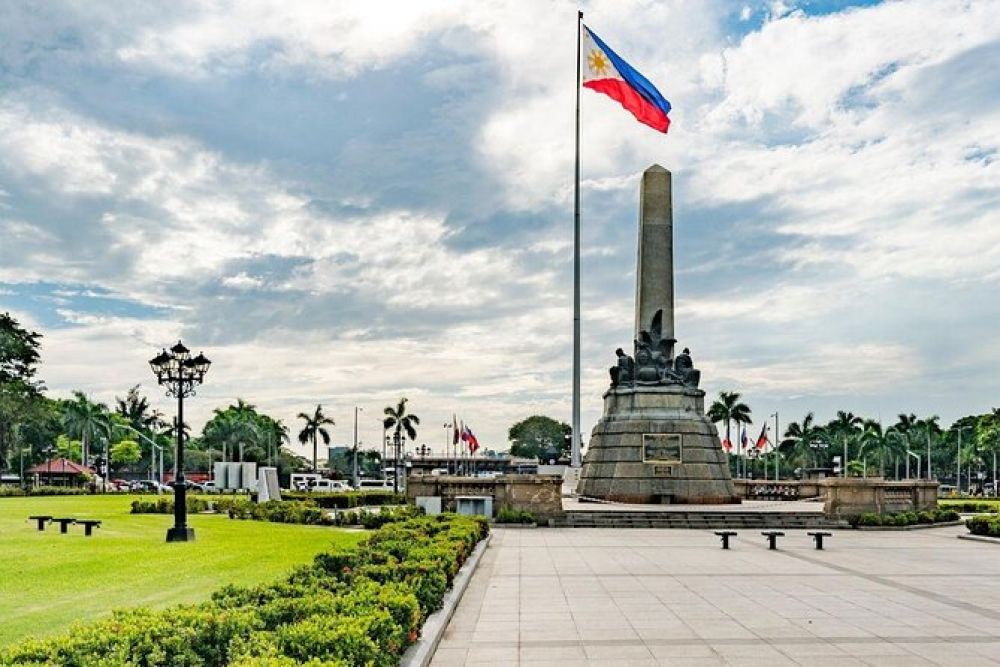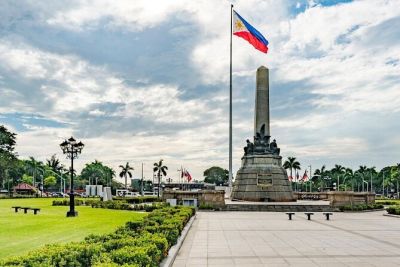

Rizal Park, also known as Luneta Park, is a historical urban park located in the heart of Manila, Philippines. Visitors can enjoy a peaceful stroll through one of the many beautifully landscaped gardens, such as the Chinese Garden, Japanese Garden, and the Orchidarium and Butterfly Pavilion. The gardens offer a tranquil escape from the bustling city with their array of flora, koi ponds, and picturesque bridges. Walking through these gardens, one can also admire various sculptures and monuments, including the iconic Rizal Monument which honors the national hero, Dr. Jose Rizal. The pleasant atmosphere and carefully tended plants provide a serene environment for relaxation and contemplation.
Adjacent to Rizal Park is the National Museum of the Philippines, a complex composed of several museum buildings. It is a premier institution preserving Philippine art, culture, and natural history. The National Museum of Fine Arts showcases classical and contemporary Philippine art pieces while the National Museum of Anthropology houses ethnographic and archaeological exhibits. Visitors can explore extensive collections of artifacts, artworks, and interactive displays through the various galleries. The experience is not only educational but also deeply moving, providing insights into the rich heritage of the Filipino people. The Spoliarium by Juan Luna, housed in the museum, is an essential piece of Philippine history and a must-see.
The Rizal Park Light and Sound Show is an immersive multimedia experience set outdoors in the park. It presents the story of the Philippines and its national hero, Dr. Jose Rizal, through a dramatic mix of lighting, sound effects, and narration. The show is typically held at the Rizal Monument and takes visitors through important events in Rizal's life and the country's struggle for independence from Spanish rule. The combination of the imposing monument and the emotive storytelling makes for a captivating and educational evening, particularly poignant if watched after exploring the Rizal Shrine, which documents his life and works.
The Central Lagoon, with its dancing musical fountain, is a popular spot for both locals and tourists to enjoy a relaxing picnic. Surrounded by expansive green lawns and shaded by towering trees, it is an ideal location for families and friends to gather, spread out a mat, and enjoy a meal together. As the sun sets, the fountain comes alive with synchronized water displays set to a variety of Filipino and international tunes. The ambiance of the park, along with the enchanting spectacle of the fountain, makes for a delightful outdoor dining experience where visitors can soak in the local culture amidst serene natural beauty.
Located within Rizal Park, the Relief Map of the Philippines is a unique attraction that provides a bird's-eye view of the country's geography. Created in 3D, it highlights the archipelago's mountain ranges, valleys, and bodies of water. This educational feature allows visitors to get a sense of the scale and diversity of the Philippines' landscape, making it especially popular among school field trips. The map is also a photographic spot, giving tourists a chance to capture a unique photo with the entire country as a backdrop. Educational plaques provide information about different regions, making it a learning experience as well as a fun visit.
One of the most significant historical areas in Rizal Park is the Rizal Execution Site, where Dr. Jose Rizal was executed by firing squad in 1896. The site is now marked by life-sized dioramas depicting the final moments of Rizal's life. Visitors to the Execution Site can learn about the events leading up to Rizal's martyrdom, which played a crucial role in igniting the Filipino revolution against Spanish colonial rule. The site is hallowed ground for Filipinos and serves as a poignant reminder of their struggle for freedom and independence. Educational tours are often available to provide deeper insight into this important period of Philippine history.
The Rizal Park Open-Air Auditorium is a hub of cultural activity, regularly hosting a range of events from live concerts to traditional dance performances and theatrical plays. As a venue that celebrates Philippine arts and culture, visitors can immerse themselves in the vibrant local art scene. The surroundings of lush gardens and the open sky make for an enchanting evening filled with entertainment. These events are often free to the public and showcase the talents of local artists, providing both tourists and residents an opportunity to experience the rich cultural tapestry of the Philippines in a scenic outdoor setting.
For a more adventurous take on exploring Rizal Park, visitors can rent bikes available at various points in the park. Biking is an efficient and fun way to cover more ground and see the various attractions within the park's 58 hectares. Families, friends, and solo travelers alike can enjoy a leisurely ride on marked paths, passing by gardens, monuments, and historical sites. It also serves as a light workout while taking in the sights, perfect for health-conscious travelers. Renting bikes allows visitors flexibility in their exploration without tiring easily from walking, making it a popular activity for those looking to add a bit of exercise to their sightseeing.
To truly appreciate the historical significance of Rizal Park, visitors can join one of the guided walking tours that delve into the rich history of this national landmark. Led by knowledgeable guides, these tours chronicle the life of Dr. Jose Rizal, the history of the park itself, and its role in the broader narratives of Manila and the Philippines. Participants will not only visit key monuments and sites within the park but also learn stories and facts that are not commonly known. Engaging and informative, these tours are ideal for history buffs and those looking to gain a deeper understanding of Filipino culture and heritage.
A daily morning ritual at Rizal Park is the flag-raising ceremony, which occurs at the Independence Flagpole, one of the tallest flagpoles in the country. This event is a display of patriotism where the Philippine National Anthem is sung as the flag is hoisted. Locals, students, government officials, and sometimes tourists gather to witness the ceremony and pay their respects to the nation. It is a solemn and heartwarming event that represents unity and national pride. Attendees can also take this time to reflect on the sacrifices made by the heroes of the nation's past for the freedoms enjoyed today.
